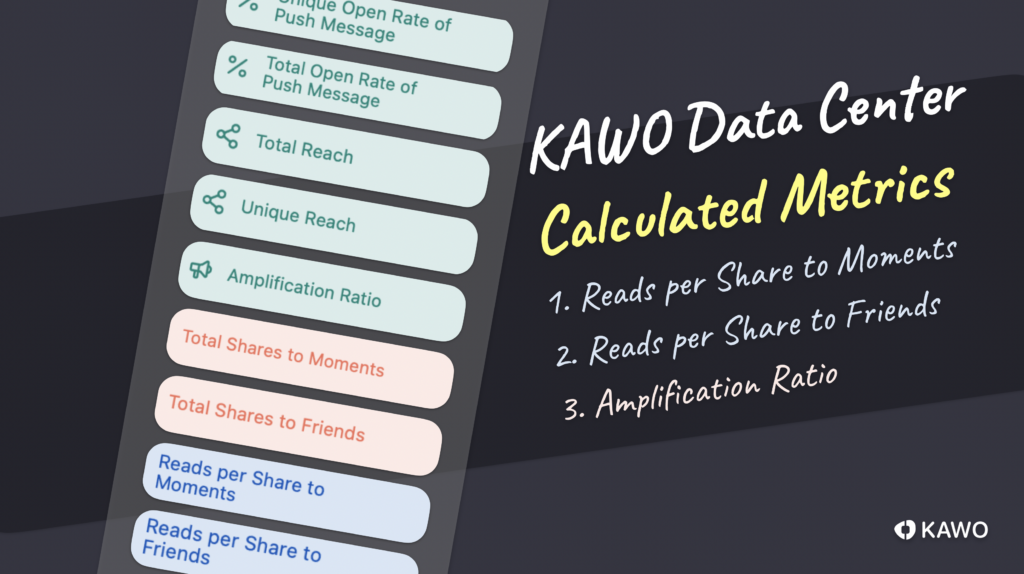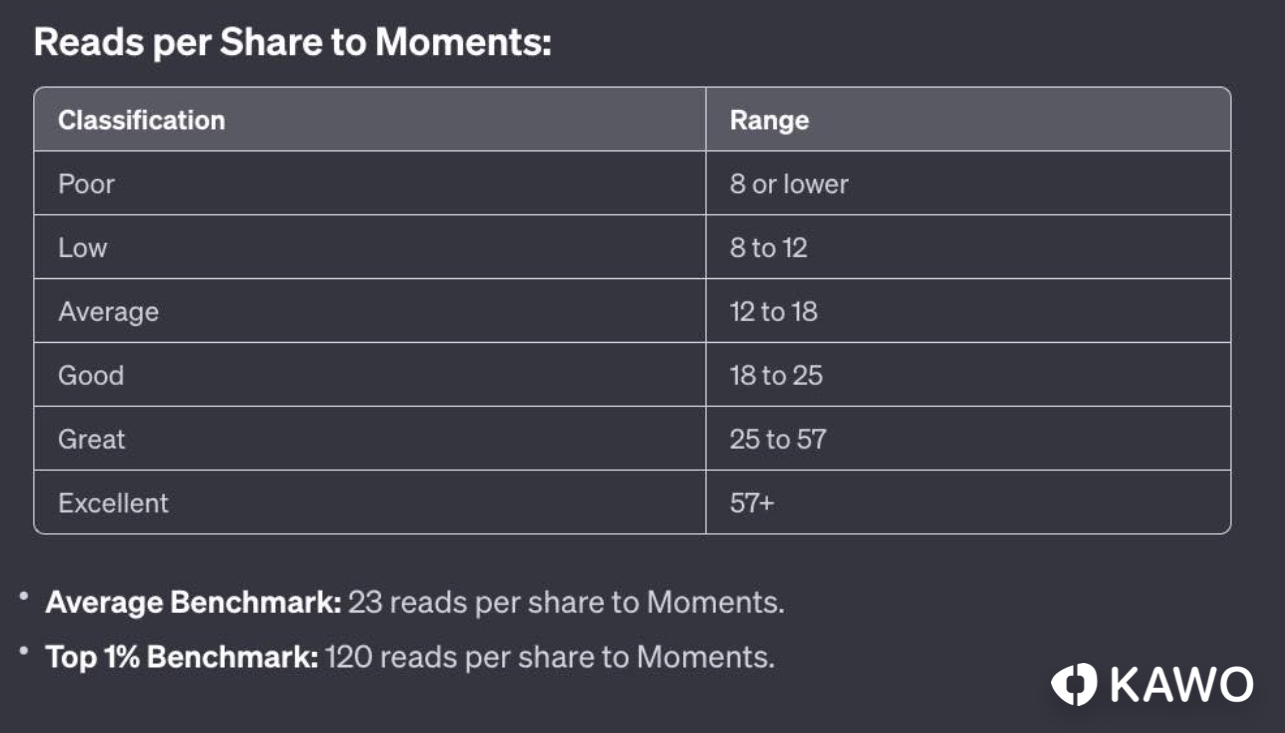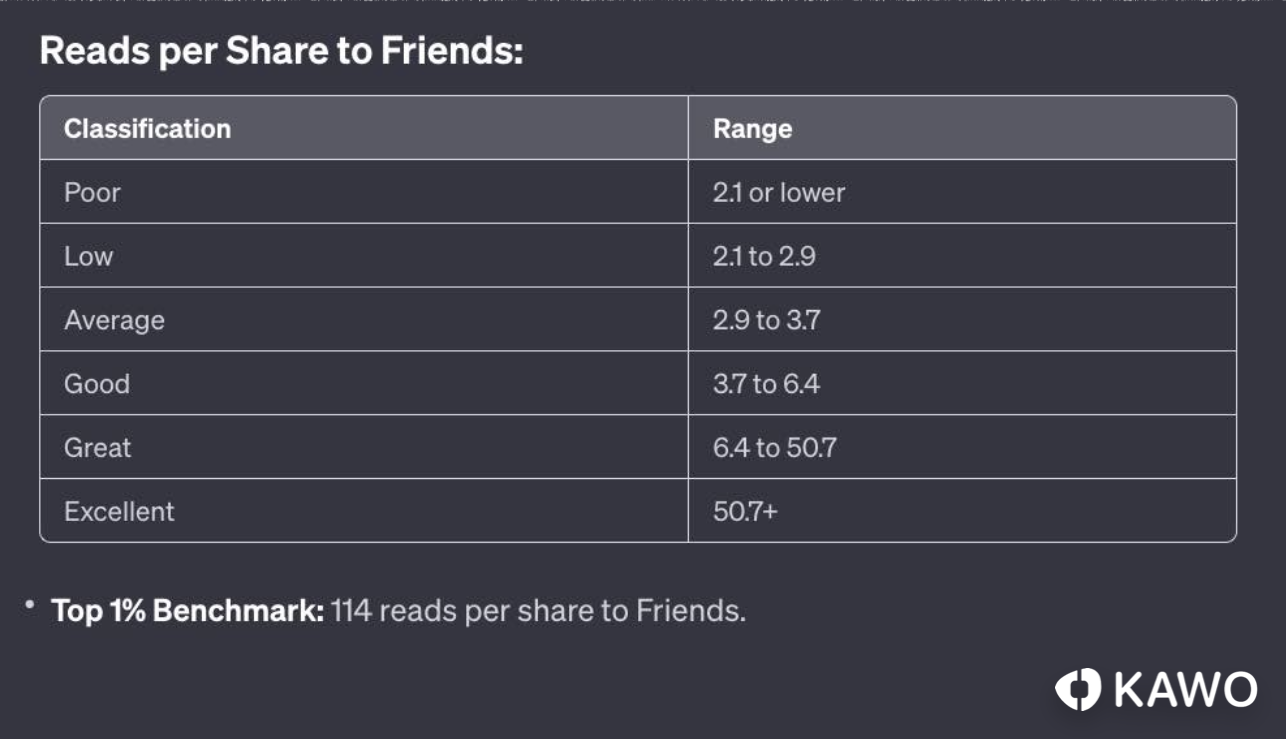
Marketers in China often zoom in on “Open Rate” as a vital gauge for WeChat Official account performance. Another common goal? Growing that follower base.
While open rate offers insights into your existing followers, it doesn’t necessarily align with gaining new ones. The magic happens when your audience shares your content, drawing in fresh followers. WeChat users wield the power to share content on their Moments or send it directly to friends via chat.
Here, KAWO steps in to track how frequently your content gets shared, estimating the average number of new followers gained through these shares. Plus, we’ve got a secret weapon: the “Amplification Ratio”. This ratio reveals how your content spreads beyond your current followers, potentially reaching new audiences.
According to KAWO database, on average, 65% of readers read your content from Push Messages, around 6% through shared to moments and 8% via shared by a friend in chat. A quick glance might make you think “Sharing to Friends” is more effective than “Sharing to Moments”. But, it’s more likely for people to share content with friends than on their WeChat Moments. Our data shows roughly 77% of sharing happens with Friends and only about 23% with Moments.
Let’s dive into the metrics:
Reads per share to Moments
This metric is calculated by dividing the total reads from shares to WeChat Moments by the number of times the article is shared to the Moments.
On average, expect 23 reads for every share to Moments: Looking at our benchmarks, we see that on average you will gain 23 reads for every share to Moments. This average can be skewed by exceptionally well-performing content, so in order to really understand how good your Reads per share to Moments is, we can look at percentiles classify it as:

Reads per share to Friends
This metric is calculated by dividing the total reads from shares to WeChat friends by the number of times the article is shared to the friends. This includes sharing to a single friend and sharing to groups.
Top-performing content can see over 114 reads per share to Friends: Sharing to a single friend will likely only result in a single read by that friend. This is why on average these numbers are much lower than Reads per share to Moments. We see that top performing content is shared to (large) groups and therefore receiving a lot of reads per share. Let’s look at percentiles classify it as:

Amplification Ratio
This ratio is calculated by dividing the number of unique reads by the number of unique reads from push messages.
A high Amplification Ratio indicates viral potential. If a higher percentage of your readers are reading your content without following your account, your amplification score will be higher. Conversely, if content is mostly read by your current follower base, the amplification score will be lower.
How will you know how good your Amplification Ratio is? Aside from comparing the metric between your articles, we’ll also provide benchmarks from all content across KAWO.

It’s undeniable that only looking at an average number does not provide any insights. The top performing content just performs so much better than the rest, it would be skewing the average. These benchmarks can help to provide more context and a guideline as to how well your content performs.







